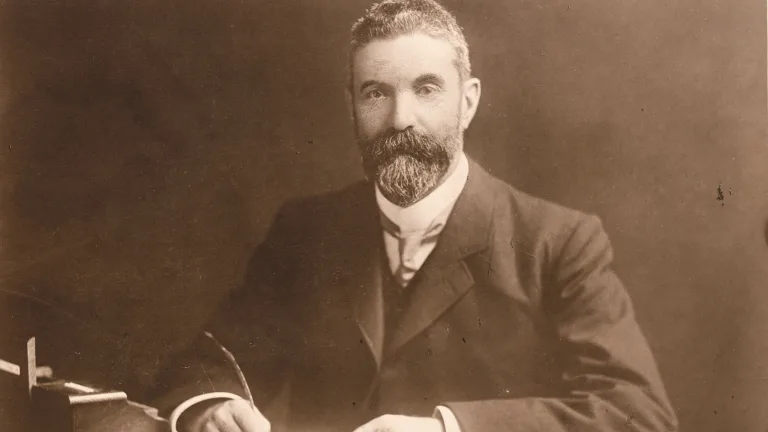You and I can surely agree on a couple of points:
First, free enterprise in a competitive market does 95% better in servicing the needs and desires of citizens than government. Better efficiency, better service delivery, better products, better time-frames, more innovation and less waste.
Second, the free markets aren’t perfect. Businesses with whom you trade may become insolvent. Sometimes fraud occurs. At the very least, customers can sometimes be dissatisfied. It can take time, often not long, for the markets to self-correct. More efficient companies replace the defunct, reputation self-check fraud, and word-of-mouth handles companies with bad service or defective products.
Third, the remaining 5% for government – and in my view its only role – is to adjudicate and protect fair dealings in the market. Government should be an umpire to maintain the free-wheeling clearing-house that is the aggregation of buyers and sellers. That’s it. Not a participant. An umpire.
Fourth, the more of your hard-earned money the government taxes, the bigger government becomes by definition and the more it encroaches beyond the role of umpire. With ever larger budgets, government starts to become a player, even a team of players, as well as the referee! Your money, or more accurately your acquiescence to government taking it, provides the means for that encroachment, the loss of our original concept of government in a liberal democracy and, ultimately, the loss of liberal democracy itself.
And fifth, there is a kind of sliding scale between 100% free market, laissez faire and, its opposite, 100% socialism. That large undefined region between these two poles has been called a ‘mixed economy’ in the West, starting with the introduction of ‘Keynesian economics’, the ‘welfare state’ and, later, the ‘central banking system’ which untethered our money from assets backing it.
With me so far?
Now the term ‘mixed economy’ gives our leaders a wide berth. An economy comprised of 95% private buyers and sellers with 5% government money to act as a referee to maintain the market is mixed of a sort. It’s like a drop of salt water in a fresh-water lake. But what happens if our leaders use your money to put their thumb of the scale? Let’s say, 90% private and 10% government. What about 75% private and 25% government? Take it further. What does an economy start to feel like at 51% private and 49% government? This is a mixed economy too. Now what was a pristine fresh-water lake is now brackish. Every second transaction has all the inefficiency of a government department. Now imagine 25% private and 75% government. Three out of four transactions in the economy start to look and feel like you’re in a call-centre queue with the Australian Taxation Office or, in America, the IRS. Then they really stand on the scales: 5% private, just enough to sell a tentative surplus from your backyard vegetable garden, if lawlessness hasn’t destroyed it because those without a garden are starving.

We cede far too much ground accepting a Keynesian ‘mixed economy’.
The territory is too vast, ranging from one notch past efficient laissez faire to one notch short of Yugoslavia in 1981.
You and I need a scorecard, in business-speak a key performance indicator, to judge where we are on this vast sliding-scale.
And I have it.
It’s called Government Expenditure as a Percentage of Gross Domestic Product.
To put it another way, it’s that part of the entire economy which is not sourced from free enterprise, the percent not generated by the efficient free-exchange of private buyers and sellers satisfying their own needs and desires. It’s the proportion of the economy in which government intrudes, displacing private transactions which would naturally and otherwise occur between you and me.
It’s the economic cancer which ultimately kills a lively, flourishing society!
So, let’s have a look at the statistic.
And to make things interesting, let’s look at it over a long period, say since Australian Federation in 1901, and to really spice things up, let’s take the measurement at the end of each of the major ‘liberal’ governments. Once you see the figures, you’ll understand why I query their ‘liberal’ credentials.
(Before I share this with you, understand it took 5 hours of research. These figures aren’t handed to you by government on a platter!)
· Alfred Deakin (end of his third government): 5%
· Robert Menzies (end of his second government): 17%
· Malcolm Fraser: 26%
· John Howard: 37%
· Scott Morrison: 45%.
You read that correctly.
We’re all sitting in a saucepan of the slow-boil, simmering-ever-closer-to-socialism kind.
A couple of thoughts. Alfred Deakin’s 5% was sufficient to build Australia’s navy, from nothing to formidable middle-power in two years. That’s Deakin doing the work of the umpire, protecting a free society from external threat. All good! Contrast that with today’s procurement bungles.

Alfred Deakin. 2nd, 5th and 7th Prime Minister of Australia
Further, the Whitlam, Hawke and Gillard governments must certainly have contributed a lot to this creep with general expansionism, Medicare and NDIS respectively.
Liberty Itch will find out with year-on-year figures, so hold on to your subscription!
In a sense though, it doesn’t matter.
Had the Abbott-Turnbull-Morrison governments wanted to reverse Labor overreach and get back to the Howard days of 37%, they could have. Had team Howard-Costello wanted to reverse possible Hawke-Keating expansion to return to 26% Fraser days, they could have. So on and so forth.
The timeline is too long and the trend all in one direction to excuse any of them.
All governments have been complicit.
I’ll therefore make this bold and daring prediction. You can hold me accountable for it.
By the time this Labor administration concludes, private will be less than government in our ‘mixed economy.’ We’ll be over the tipping point. Unless you and I pressure MPs, we’ll have 49% private and 51% government, or 45% private and 55% government.
Should this trend continue, Australia will look like a 1970s dank Wilson-Callaghan economy which Thatcher had to revitalise. We’ll have more in common with a 1970s centralised State Dockyard economy of NSW Wran which Greiner had to unchain. We’ll feel more like 2020 than 1950 Detroit.
There’s Australia’s KPI. We’re 45% socialist.
You and I can at least agree that this is a worrying prospect deserving action.
Thank you for your support. To help us in our battle to protect liberty and freedom please click here
An entrepreneur who has employed 1,470+ people, Kenelm was admitted to the BRW Fast 100 three times with businesses in Australia, NZ, Singapore and New York, where he lived for 12 years. Kenelm’s investment firm performs mid-market leveraged roll-ups. He was a regular columnist for the Australian Financial Review. Kenelm is the Founder of Liberty Itch.










